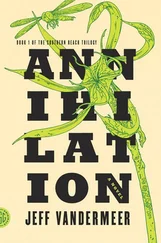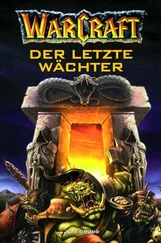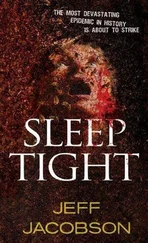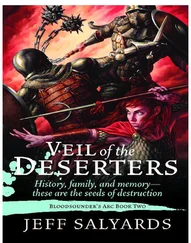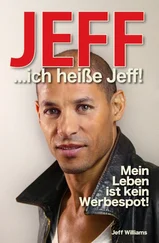Jeff Molofee - NeHe's OpenGL Tutorials
Здесь есть возможность читать онлайн «Jeff Molofee - NeHe's OpenGL Tutorials» весь текст электронной книги совершенно бесплатно (целиком полную версию без сокращений). В некоторых случаях можно слушать аудио, скачать через торрент в формате fb2 и присутствует краткое содержание. Жанр: Программирование, на английском языке. Описание произведения, (предисловие) а так же отзывы посетителей доступны на портале библиотеки ЛибКат.
- Название:NeHe's OpenGL Tutorials
- Автор:
- Жанр:
- Год:неизвестен
- ISBN:нет данных
- Рейтинг книги:3 / 5. Голосов: 1
-
Избранное:Добавить в избранное
- Отзывы:
-
Ваша оценка:
- 60
- 1
- 2
- 3
- 4
- 5
NeHe's OpenGL Tutorials: краткое содержание, описание и аннотация
Предлагаем к чтению аннотацию, описание, краткое содержание или предисловие (зависит от того, что написал сам автор книги «NeHe's OpenGL Tutorials»). Если вы не нашли необходимую информацию о книге — напишите в комментариях, мы постараемся отыскать её.
NeHe's OpenGL Tutorials — читать онлайн бесплатно полную книгу (весь текст) целиком
Ниже представлен текст книги, разбитый по страницам. Система сохранения места последней прочитанной страницы, позволяет с удобством читать онлайн бесплатно книгу «NeHe's OpenGL Tutorials», без необходимости каждый раз заново искать на чём Вы остановились. Поставьте закладку, и сможете в любой момент перейти на страницу, на которой закончили чтение.
Интервал:
Закладка:
void LoadGLTextures() // Creates Textures From Bitmaps In The Resource File
{
HBITMAP hBMP; // Handle Of The Bitmap
BITMAP BMP; // Bitmap Structure
// The ID Of The 3 Bitmap Images We Want To Load From The Resource File
byte Texture[]={ IDB_BUTTERFLY1, IDB_BUTTERFLY2, IDB_BUTTERFLY3 };
The line below uses sizeof(Texture) to figure out how many textures we want to build. We have 3 ID's in Texture[ ] so the value will be 3. sizeof(Texture) is also used for the main loop.
glGenTextures(sizeof(Texture), &texture[0]); // Generate 3 Textures (sizeof(Texture)=3 ID's)
for (int loop=0; loop
{
LoadImage takes the following parameters: GetModuleHandle(NULL) – A handle to an instance. MAKEINTRESOURCE(Texture[loop]) – Converts an Integer Value (Texture[loop]) to a resource value (this is the image to load). IMAGE_BITMAP – Tells our program that the resource to load is a bitmap image.
The next two parameters (0,0) are the desired height and width of the image in pixels. We want to use the default size so we set both to 0.
The last parameter (LR_CREATEDIBSECTION) returns a DIB section bitmap, which is a bitmap without all the color information stored in the data. Exactly what we need.
hBMP points to the bitmap data that is loaded by LoadImage( ).
hBMP = (HBITMAP)LoadImage(GetModuleHandle(NULL), MAKEINTRESOURCE(Texture[loop]), IMAGE_BITMAP, 0, 0, LR_CREATEDIBSECTION);
Next we check to see if the pointer (hBMP) actually points to data. If you wanted to add error checking, you could check hBMP and pop up a messagebox if there's no data.
If data exists, we use GetObject( ) to grab all of the data (sizeof(BMP)) from hBMP and store it in our BMP (bitmap structure).
glPixelStorei tells OpenGL that the data is stored in word alignments (4 bytes per pixel).
We then bind to our texture, set the filtering to GL_LINEAR_MIPMAP_LINEAR (nice and smooth), and generate the texture.
Notice that we use BMP.bmWidth and BMP.bmHeight to get the height and width of the bitmap. We also have to swap the Red and Blue colors using GL_BGR_EXT. The actual resource data is retreived from BMP.bmBits.
The last step is to delete the bitmap object freeing all system resources associated with the object.
if (hBMP) // Does The Bitmap Exist?
{ // If So…
GetObject(hBMP,sizeof(BMP), &BMP); // Get The Object
// hBMP: Handle To Graphics Object
// sizeof(BMP): Size Of Buffer For Object Information
// Buffer For Object Information
glPixelStorei(GL_UNPACK_ALIGNMENT,4); // Pixel Storage Mode (Word Alignment / 4 Bytes)
glBindTexture(GL_TEXTURE_2D, texture[loop]); // Bind Our Texture
glTexParameteri(GL_TEXTURE_2D, GL_TEXTURE_MAG_FILTER, GL_LINEAR); // Linear Filtering
glTexParameteri(GL_TEXTURE_2D, GL_TEXTURE_MIN_FILTER, GL_LINEAR_MIPMAP_LINEAR); // Mipmap Linear Filtering
// Generate Mipmapped Texture (3 Bytes, Width, Height And Data From The BMP)
gluBuild2DMipmaps(GL_TEXTURE_2D, 3, BMP.bmWidth, BMP.bmHeight, GL_BGR_EXT, GL_UNSIGNED_BYTE, BMP.bmBits);
DeleteObject(hBMP); // Delete The Bitmap Object
}
}
}
Nothing really fancy in the init code. We add LoadGLTextures() to call the code above. The screen clear color is black. Depth testing is disabled (cheap way to blend). We enable texture mapping, then set up and enable blending.
BOOL Initialize (GL_Window* window, Keys* keys) // Any GL Init Code & User Initialiazation Goes Here
{
g_window = window;
g_keys = keys;
// Start Of User Initialization
LoadGLTextures(); // Load The Textures From Our Resource File
glClearColor (0.0f, 0.0f, 0.0f, 0.5f); // Black Background
glClearDepth (1.0f); // Depth Buffer Setup
glDepthFunc (GL_LEQUAL); // The Type Of Depth Testing (Less Or Equal)
glDisable(GL_DEPTH_TEST); // Disable Depth Testing
glShadeModel (GL_SMOOTH); // Select Smooth Shading
glHint (GL_PERSPECTIVE_CORRECTION_HINT, GL_NICEST); // Set Perspective Calculations To Most Accurate
glEnable(GL_TEXTURE_2D); // Enable Texture Mapping
glBlendFunc(GL_ONE,GL_SRC_ALPHA); // Set Blending Mode (Cheap / Quick)
glEnable(GL_BLEND); // Enable Blending
We need to initialize all 50 objects right off the start so they don't appear in the middle of the screen or all in the same location. The loop below does just that.
for (int loop=0; loop<50; loop++) // Loop To Initialize 50 Objects
{
SetObject(loop); // Call SetObject To Assign New Random Values
}
return TRUE; // Return TRUE (Initialization Successful)
}
void Deinitialize (void) // Any User DeInitialization Goes Here
{ }
void Update (DWORD milliseconds) // Perform Motion Updates Here
{
if (g_keys->keyDown [VK_ESCAPE] == TRUE) // Is ESC Being Pressed?
{
TerminateApplication (g_window); // Terminate The Program
}
if (g_keys->keyDown [VK_F1] == TRUE) // Is F1 Being Pressed?
{
ToggleFullscreen (g_window); // Toggle Fullscreen Mode
}
}
Now for the drawing code. In this section I'll attempt to explain the easiest way to texture map a single image across two triangles. For some reason everyone seems to think it's near impossible to texture an image to a triangle.
The truth is, you can texture an image to any shape you want. With very little effort. The image can match the shape or it can be a completely different pattern. It really doesn't matter.
First things first… we clear the screen and set up a loop to render all 50 of our butterflies (objects).
void Draw (void) // Draw The Scene
{
glClear (GL_COLOR_BUFFER_BIT | GL_DEPTH_BUFFER_BIT); // Clear Screen And Depth Buffer
for (int loop=0; loop<50; loop++) // Loop Of 50 (Draw 50 Objects)
{
We call glLoadIdentity( ) to reset the modelview matrix. Then we select the texture that was assigned to our object (obj[loop].tex).
We position the butterfly using glTranslatef() then rotate the buttefly 45 degrees on it's X axis. This tilts the butterfly a little more towards the viewer so it doesn't look like a flat 2D object.
The final rotation spins the butterfly on it's z-axis which makes it spin as it falls down the screen.
glLoadIdentity (); // Reset The Modelview Matrix
glBindTexture(GL_TEXTURE_2D, texture[obj[loop].tex]); // Bind Our Texture
glTranslatef(obj[loop].x, obj[loop].y, obj[loop].z); // Position The Object
glRotatef(45.0f, 1.0f, 0.0f, 0.0f); // Rotate On The X-Axis
glRotatef((obj[loop].spinz), 0.0f, 0.0f, 1.0f); // Spin On The Z-Axis
Texturing a triangle is not all that different from texturing a quad. Just because you only have 3 vertices doesn't mean you can't texture a quad to your triangle. The only difference is that you need to be more aware of your texture coordinates.
In the code below, we draw the first triangle. We start at the top right corner of an invisible quad. We then move left until we get to the top left corner. From there we go to the bottom left corner.
Читать дальшеИнтервал:
Закладка:
Похожие книги на «NeHe's OpenGL Tutorials»
Представляем Вашему вниманию похожие книги на «NeHe's OpenGL Tutorials» списком для выбора. Мы отобрали схожую по названию и смыслу литературу в надежде предоставить читателям больше вариантов отыскать новые, интересные, ещё непрочитанные произведения.
Обсуждение, отзывы о книге «NeHe's OpenGL Tutorials» и просто собственные мнения читателей. Оставьте ваши комментарии, напишите, что Вы думаете о произведении, его смысле или главных героях. Укажите что конкретно понравилось, а что нет, и почему Вы так считаете.

